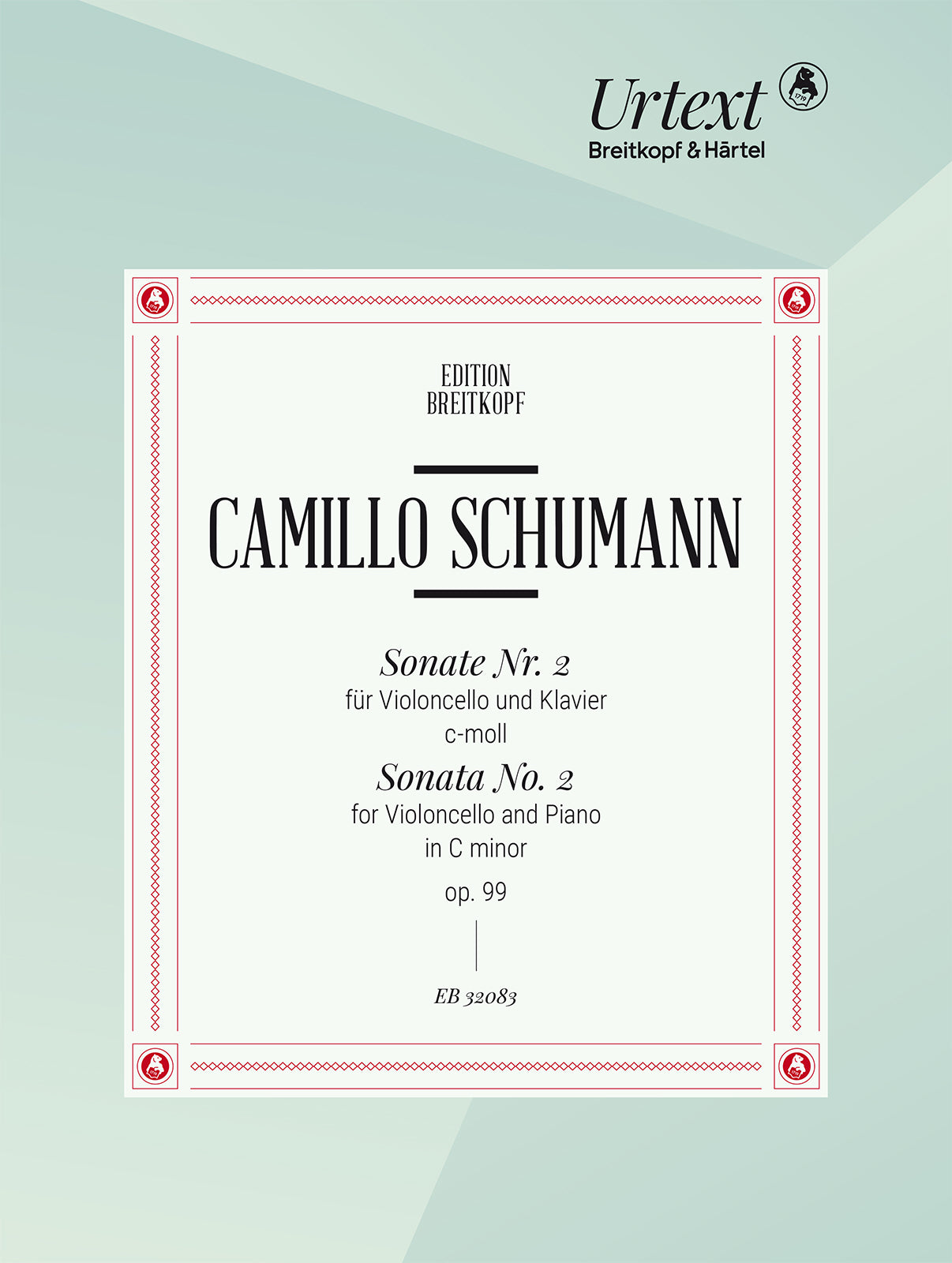Camillo Schumann: Cello Sonata No. 2 in C Minor, Op. 99
In stock and typically ships within 1 business day.
- Composer: Camillo Schumann (1872-1946)
- Editor: Maria Kliegel
- Instrumentation: Cello, Piano
- Work: Cello Sonata No. 2 in C Minor, Op. 99
- ISMN:
- Size: 9.1 x 12.0 inches
- Pages: 108
- Urtext / Critical Edition
Description
There are many composers about whom it is believed, today, that they composed conservatively, or against the taste of their time. The question is also raised, today, which extract of this large amount of effective and high-quality music, unknown for the most part, should receive our attention; which of it is "worth" rediscovering or re-editing. Camillo Schumann is one of the most important representatives of these composers, but his works are still largely unknown today. He was born on 10 March 1872 in Königstein, Saxony. His musical language combines the sound world of Brahms with the grand, late-romantic Liszt School. He wrote piano parts of incredible power and virtuosity, approaching the sounds of Rachmaninoff. His wonderfully individual melodic language makes these works a valuable testimony to a composer who never had his due recognition.
The cello sonatas Opp. 59 and 99 are the first of three works for this combination. Op. 59 was composed around 1905/06, Op. 99 followed in 1932. Nothing is known so far of the circumstances of the composition of this work, including for whom it was composed. However, it is quite evident that Schumann wrote it, like most of his works, primarily for his own concerts and befriended musicians. The extensive entries in the piano part bear witness to a considerably practical approach. Crossed-out bars, notes added or crossed out in chords as well as a number of revisions of other kinds are more the rule than the exception. The composer's own fingerings written in the piano part also underline this assumption. The present edition contains two solo-parts each. One "clean" Urtext-part free of any additions from the editor and a second one with bowing marks and fingerings by Maria Kliegel who recorded both sonatas for the first time with the label Naxos.
Both sonatas show evident resemblance to the works of this combination by Johannes Brahms and are therefore a "must have" for ambitious cellists.
Publishers use a lot of words to describe what they sell, and we know it can be confusing. We've tried to be as clear as possible to make sure you get exactly what you are looking for. Below are descriptions of the terms that we use to describe the various formats that music often comes in.
Choral Score
A score for vocalists that only contains the vocal lines. The instrumental parts are not there for reference. Generally, cheaper than a vocal score and requires multiple copies for purchase.
Facsimile
Reproductions of the original hand-written scores from the composer.
Full Score
For ensemble music, this indicates that the edition contains all parts on a single system (there are not separate parts for each player). In larger ensembles, this is for the conductor.
Hardcover
Hardbound. Generally either linen-covered or half-leather.
Orchestral Parts
Similar to a wind set, this is a collection of parts. In the case of strings, the numbers listed are the number of copies included, though generally these are available individually (often with minimum quantities required).
Paperback
When publishers offer multiple bindings (e.g. hardcover) or study scores, this is the "standard" version. If you're planning to play the music, this is probably what you want.
Performance / Playing Score
A score of the music containing all parts on one system, intended for players to share. There are not separate parts for each player.
Set of Parts
For ensemble music, this indicates that there are separate individual parts for each player.
Solo Part with Piano Reduction
For solo pieces with orchestra, this is a version that contains a piano reduction of the orchestra parts. For piano pieces, two copies are typically needed for performance.
Study Score
A small (think choral size) copy of the complete score meant for studying, and not playing. They make great add-ons when learning concertos and small chamber works.
Vocal Score
A score prepared for vocalists that includes the piano/organ part or a reduction of the instrumental parts.
Wind Set
For orchestral music, this is a collection of wind and percussion parts. The specific quantities of each instrument are notated.
With Audio
In addition to the printed music, the edition contains recordings of the pieces. This may be an included CD, or access to files on the internet.
With / Without Fingering (Markings)
Some publishers prepare two copies - a pure Urtext edition that includes no fingering (or bowing) suggestions and a lightly edited version that includes a minimal number of editorial markings.


